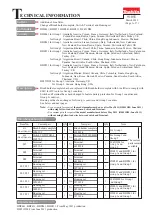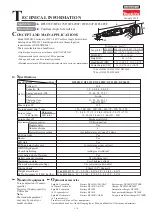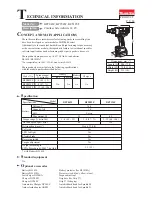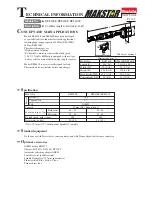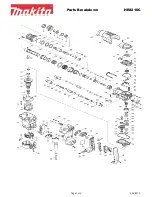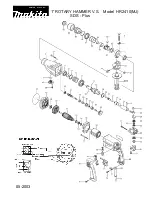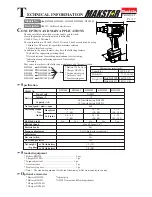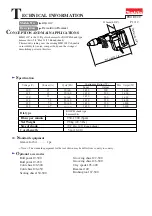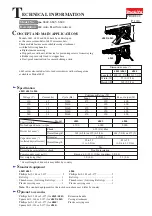
Terminal Identification Table:
AL600LGK Logic Board
Terminal
Function/Description
Legend
IN1+, IN1-
These terminals connect to the 12 or 24VDC FACP notification appliance circuit outputs.
IN2+, IN2-
(Class A or Class B) Input trigger voltage is 9-30VDC @ 5mA min. Terminal polarity is
shown in alarm condition. During an alarm condition these inputs will cause the selected
outputs chosen to drive notification appliances. The designated outputs are set by output
switches OUT1 through OUT4 (Input/Output Selection Table pg. 4). A trouble condition
on an output loop will cause the corresponding input to trip the FACP by opening the FACP
loop. An alarm condition will always override trouble to drive notification appliances.
RET1+, RET1-
For Class A hookups these terminal pairs return to FACP NAC1 and/or NAC2. For Class B
RET2+, RET2-
hookups the FACP EOL resistor from the NAC1 and/or NAC2 outputs are terminated
at these terminals. Optionally, other notification appliances or additional signaling circuit
power supplies may be connected to these terminals. If this option is chosen the EOL
resistor must be terminated at the last device.
+ OUT1 --
Notification appliances are connected to these outputs (Typical Application
+ OUT2 --
Diagrams pg. 6). Each power limited output will supply 2 amp. Two (2) outputs may
+ OUT3 --
be connected in parallel for a maximum NAC output capability of 4 amp. Total supply
+ OUT4 --
current is 6.5 amp. Outputs are controlled by designated input 1 (IN1) or input 2 (IN2)
(Input/Output Selection Table pg. 4).
C “FAULT” N.C.
An open circuit across this pair of terminals will cause IN1 and IN2 to simultaneously
(Common
signal a trouble condition back to the FACP (Typically used to report AC or BAT Fail)
trouble input)
(Fig. 4D, pg. 7).
N.C., C, N.O.
These are dry contact trouble outputs that follow any general loop/system trouble conditions.
(Common
(Typically used to trigger a digital communicator or other reporting device).
trouble output)
(Fig. 4D, pg. 7).
-- AUX+
This separate 1 amp auxiliary output is typically used to power 4-wire smoke detectors.
It can be reset (voltage drops out) by pressing the momentary aux reset switch on
the AL600LGK logic board or via the N.O. “REMOTE” C terminals (Fig. 4, pg. 7).
N.O. C
A momentary dry contact closure across these terminals interrupts the [ -- AUX + ]
“REMOTE”
power output to reset 4-wire smoke detectors
Power Supply Board
Terminal
Function/Description
Legend
AC/AC
Low voltage AC input.
-- DC +
12VDC or 24VDC @ 6.5 amp continuous non-power limited output.
AC FAIL
Form “C” dry contacts used to signal the loss of AC, with AC present terminals
C, N.C., N.O.
N.O. and C are open, N.C. and C are closed. When loss of AC occurs terminals
N.O. and C close, N.C. and C are open (Fig. 4, pg. 7).
BAT FAIL
Form “C” dry contacts used to signal low battery voltage or loss of battery voltage.
N.O., N.C., C
Under normal conditions terminals NO and C are open, NC and C are closed.
During a trouble condition terminals NO and C are closed, and NC and C are open
(Fig. 4, pg. 7).
BAT+, BAT-
Stand-by battery input (leads provided). Use two (2) 12VDC batteries wired in series
for 24VDC operation (Fig. 4, pg. 7).
- 5 -











